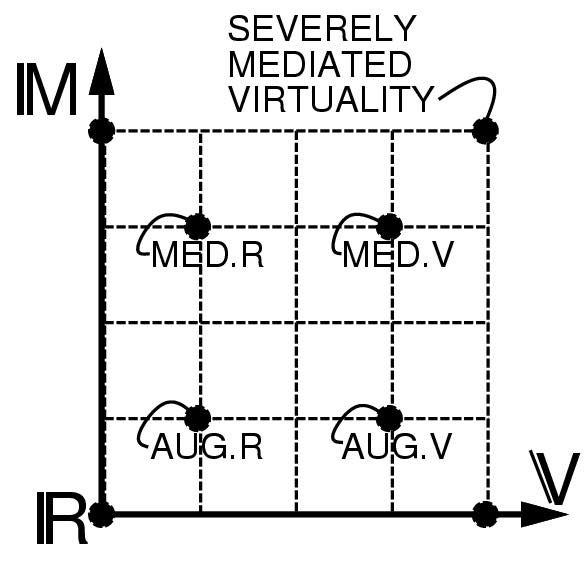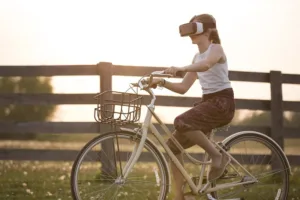With the reporting on AR, VR, MR and smartglasses at an all time high one would think that we have a clear understanding of what is what. However, as it seems that is not necessarily the case. So for example please explain to me what the difference is between mixed reality (MR) and augmented reality (AR).

While I do not believe that there exists an industry wide definition for all these terms, I do believe that more and more people are suggesting terms that describe one of the terms and differentiating them frim the other devices. For example in a recent article “The Difference Between Smartglasses & AR Glasses, and Why Everyone is Confused” by Ben Lang, on RoadtoVR.com they make a clear distinction between two terms of the “Reality Industry”.
So let us take a look of what some have suggested so far.
Smartglasses
The term seems to have appeared somewhere around 2012 as a description for glasses that people wear as a computing device. The Wikipedia article for smartglasses shows that at that time the definition was kind of loose and was not based on any specific technology, but on a specific form factor. Any glasses that a person would wear that had any other function than correcting the vision of the wearer (this does include sunglasses as correction for too much light). So some include welding helmets into the smartglasses category, which seems a stretch to me. (Hmmm.. it would seem to me that a better definition might be based on active imaging and passive optical-only processes. Man. Ed.)
Augmented Reality
The Wikipedia definition of AR is a more detailed description of the augmentation of reality with computer generated content. This does include vision-based systems but also includes other senses like hearing, feeling, smelling, etc. These systems are often called 4D in amusement parks.
One of the key issue is the connection to the real world, with the computer generated objects connecting with real world images in a realistic way. In other words, a vase is standing on the table and not hovering two inches above. This spatial connection is a very important one to make AR appear real. This was the main difference of AR compared to smartglasses RoadtoVR pointed out in their article.
Interestingly, AR includes systems that subtract certain information from the real world view and replace them with computer generated content.
From a device perspective AR is mostly connected to some form of semi-transparent screen where a real world light field mixes with a computer generated image. This optical interface is one of the key factors defining the quality of an AR device.
Virtual Reality
Wikipedia describes VR as a computer generated environment that may or may not describe the real world. Here, the most important differentiating aspect is that VR devices replace any view of the real world with a computer generated image. This field has been the target for research since the 1950s and implementations are more a reflection of the available display technologies than the underlying concept.
Today we often see VR devices defined as a display system that completely masks any view of the real world. From a technical perspective no photon from the real world reaches the eye directly. Even real world images are still just a display representation of the surroundings.
Sometimes 360º video is seen as different from VR as it allows no direct interaction with the content other then a head tracking function that allows the user to look at any part of the computer generated content.
Augmenting your reality with VR headsets is not always a good idea. Image:Pixabay
Mixed Reality
By Wikipedia MR is defined as a mix of real and virtual views that merge to create a new environment. In other words MR is a mix of AR and VR as well as other forms described below. Of all the terms this is the most unclear as there is no distinct optical function that differentiates it from AR and MR.
So what is the difference between all these terms?
For beginners, smartglasses are a device type, while AR, VR and MR are complete technologies that transcend the device form factor and can be used on a range of devices. For example, AR can be used on smartphone and tablets, if there are no glasses available. So when we compare these terms, we have to compare smartglasses to AR Glasses and VR Glasses to even make any sense.
Nevertheless, without understanding the technology differences, we are lost in trying to understand what is what.
Smartglasses seem to carry on the idea of adding the term “smart” to anything that goes beyond the historically expected functionality of a device. For example, a smartphone could do so much more than a cellphone that we called it smart. The same goes for controllers, cars, light switches, etc. Add features, call it smart and sell it for a good profit. By that definition, anything that looks like glasses and can do more than your correction glasses become smartglasses. In this sense, smartglasses can very well be AR Glasses, but, hey, it also could just be a head mounted HUD. There seems to be no clear distinction between the terms.
The terms AR, VR and MR and their differences are a little more difficult to understand. Besides marketing departments in various companies in this field using the terms for their own purposes, there exist real definitions of these terms that make some kind of sense, even if they appear very theoretical at first.
The Reality – Virtuality Continuum was first suggested by Paul Milgram in 1994. By this view, there exist a continuum between real and virtual environment. This is shown in the image below.
 Reality Virtuality Continuum, Source Wikipedia
Reality Virtuality Continuum, Source Wikipedia
By this definition there is no virtual reality, but something like ‘augmented virtuality’. This makes some sense, but of course this is not a good platform for the developers to differentiate their devices from their competitors. It’s slightly strange how the currently used names were picked for new developments, and differently from existing theoretical descriptions.
The story was expanded by adding a second dimension called Mediality. This describes how much the content is altered by the use of the respective media.
 Mediated Reality Continuum, Source Wikipedia
Mediated Reality Continuum, Source Wikipedia
This concept seems weird at the beginning, but does allow for an understanding of where certain implementations fall. While the real world is located at the R point in this diagram, a complete computer world would be at V. Any content change introduced by media is reflected by its position on the Mediality axis.
The higher up on the medially axis the more the content is altered by the media. Using that description, a video representation of the real world (like a 360º video) would be described as a “Mediated Reality”, while a VR game in outer space would be a “Severely Mediated Virtuality”. Good luck in finding any of these terms any time soon in the tech blogs!
What makes sense from a scientific perspective, does not always make sense for the consumer and definitely not for the marketing managers promoting any of these devices. For example, in Milgram’s continuum, the term Mixed Reality is a catch all phrase for anything that is not real; however this is definitely not how it is used by the media or companies today.
If you conclude that I based my article strongly and maybe too much on Wikipedia you are very observant. The reason for this madness is that Wikipedia is created by industry insiders and therefore shows exactly the point I am trying to make. There is no clear cut definition that is shared by the industry today! If you have a good idea on how to define these terms and can convince all involved parties, you will get my vote. Until then we can argue any way we want. (NH)

